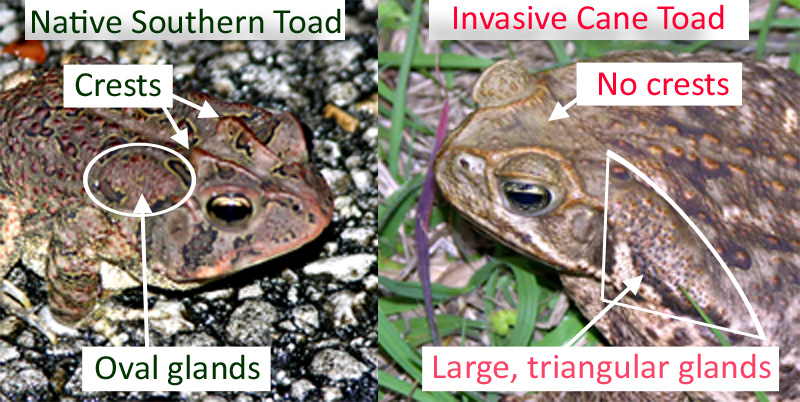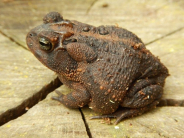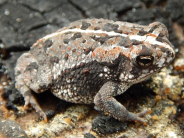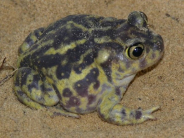Exotic Species - Cane Toad
The Cane Toad in Southwest Florida
General Information
Cane toads are large, stocky amphibians with dry, warty skin. They are native to Central America, South America, Mexico, and extreme southern Texas. Cane toads were originally introduced to Florida to control sugar cane pests and have also been accidentally and intentionally released by animal importers. The non-native, invasive amphibian emerges in early spring months in Southwest and Central Florida. They are found in greater densities in human-modified habitats and are common in yards. Cane toads adapt to new conditions, have an affinity for a disturbed habitat, and tolerate a wide range of conditions, which enables them to successfully colonize in various places. Adult cane toads are nocturnal and remain hidden during the day while emerging at night to hunt for food.
Identifying Cane Toads
General toad features include living on the ground and not climbing well, stout bodies with short legs, dry, warty skin, and slightly webbed rear feet. Cane toads are in the family Bufonidae along with Southern toads and Oak toads. The Eastern Spadefoot toad is in a different scientific family, but shares general features. Cane toads may be larger than three inches, have no knobs or crests on top of their heads, have ridges around their eyes and above their nose, and triangular poison glands tapering back to a point on their shoulders.

(Photo by: Steve A. Johnson, University of Florida)
Risks to Pets and Humans
A cane toad’s toxin can kill your pet in as little as 15 minutes without proper treatment. Ingesting or licking a cane toad can cause these symptoms: an animal may start acting strangely with frantic or disoriented behavior, may have brick-red gums, seizures, and foaming of the mouth. Immediately wash out your pets mouth with water spraying out and wipe gums and tongue to remove the milky, white toxin. Immediately contact your veterinarian. Cane toad secretion of the parotoid glands is highly irritating to human eyes and cuts on the skin. Handling cane toads should be done with gloves and extreme care to avoid toxins in the eyes.
How to Humanely Euthanize Cane Toads
To catch a cane toad, wear protective eyewear, use gloves and a fish or butterfly net. Euthanizing a cane toad is done by spraying 20% benzocaine sunburn spray or lidocaine ointment on the back or lower belly of the toad. After a few minutes it will be unconscious. Place in a baggy and store in freezer for a week before putting in the trash.
Identifying Similar Species of Toads
Southern Toad– Native
- Rarely larger than three inches
- Small, oval poison glands; no danger to pets
- Two crests on top of head
- Gray, brown, or reddish body
Oak Toad– Native
- Never larger than 1.5 inches
- Small, oval poison glands; no danger to pets
- Indistinct crest on top of head
- Obvious light colored line down center of back
- Underside of feet often bright orange
Eastern Spadefoot– Native
- Rarely larger than 2 inches
- Flat, indistinct poison glands; no danger to pets
- No crests on top of head
- Hourglass shape and numerous yellow markings on back
- Prominent digging “spade” on rear feet
For more information on the Cane toad, visit the UF/IFAS Extension website HERE.



